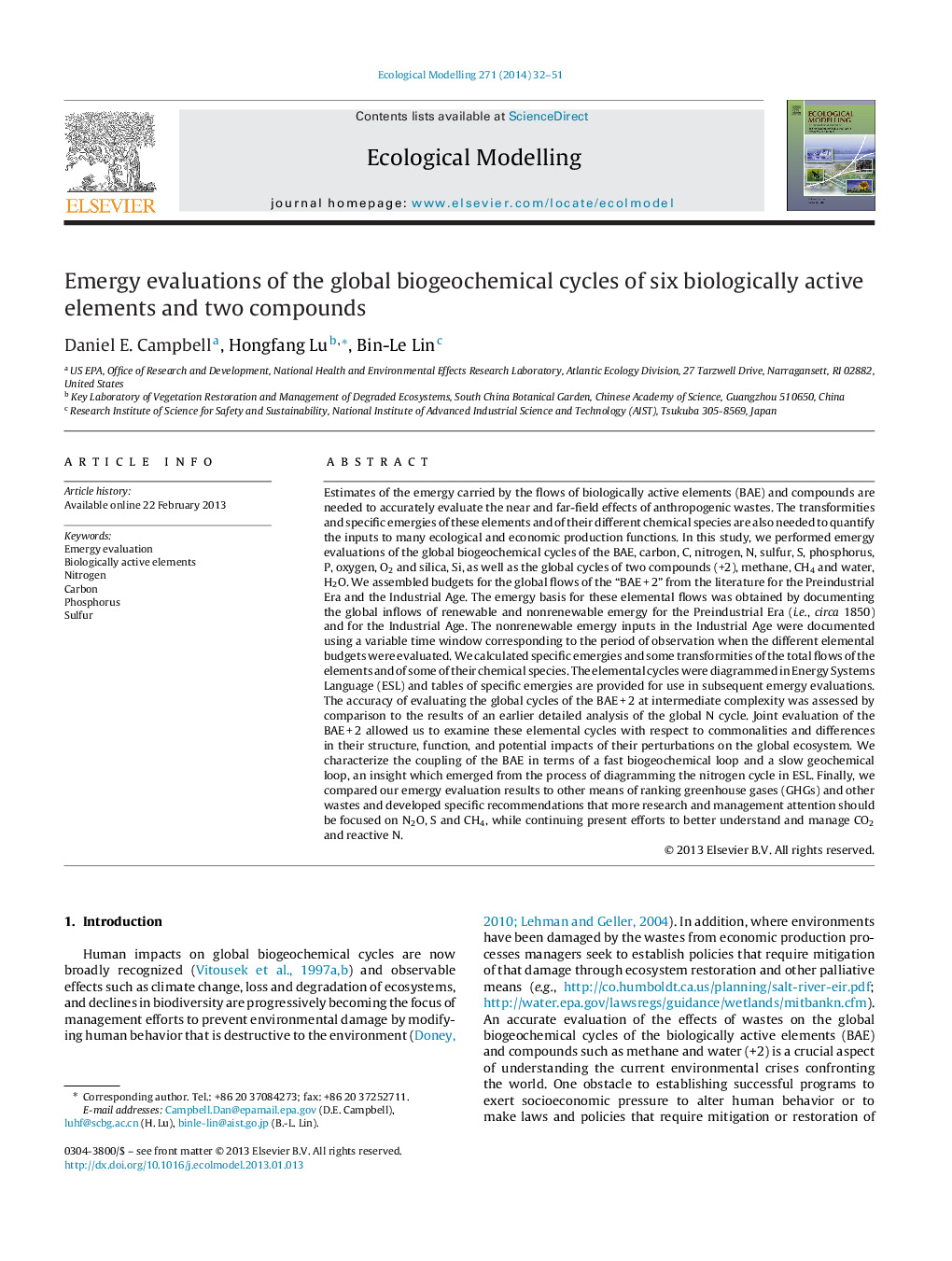| Article ID | Journal | Published Year | Pages | File Type |
|---|---|---|---|---|
| 4376022 | Ecological Modelling | 2014 | 20 Pages |
Estimates of the emergy carried by the flows of biologically active elements (BAE) and compounds are needed to accurately evaluate the near and far-field effects of anthropogenic wastes. The transformities and specific emergies of these elements and of their different chemical species are also needed to quantify the inputs to many ecological and economic production functions. In this study, we performed emergy evaluations of the global biogeochemical cycles of the BAE, carbon, C, nitrogen, N, sulfur, S, phosphorus, P, oxygen, O2 and silica, Si, as well as the global cycles of two compounds (+2), methane, CH4 and water, H2O. We assembled budgets for the global flows of the “BAE + 2” from the literature for the Preindustrial Era and the Industrial Age. The emergy basis for these elemental flows was obtained by documenting the global inflows of renewable and nonrenewable emergy for the Preindustrial Era (i.e., circa 1850) and for the Industrial Age. The nonrenewable emergy inputs in the Industrial Age were documented using a variable time window corresponding to the period of observation when the different elemental budgets were evaluated. We calculated specific emergies and some transformities of the total flows of the elements and of some of their chemical species. The elemental cycles were diagrammed in Energy Systems Language (ESL) and tables of specific emergies are provided for use in subsequent emergy evaluations. The accuracy of evaluating the global cycles of the BAE + 2 at intermediate complexity was assessed by comparison to the results of an earlier detailed analysis of the global N cycle. Joint evaluation of the BAE + 2 allowed us to examine these elemental cycles with respect to commonalities and differences in their structure, function, and potential impacts of their perturbations on the global ecosystem. We characterize the coupling of the BAE in terms of a fast biogeochemical loop and a slow geochemical loop, an insight which emerged from the process of diagramming the nitrogen cycle in ESL. Finally, we compared our emergy evaluation results to other means of ranking greenhouse gases (GHGs) and other wastes and developed specific recommendations that more research and management attention should be focused on N2O, S and CH4, while continuing present efforts to better understand and manage CO2 and reactive N.
Graphical abstractFigure optionsDownload full-size imageDownload as PowerPoint slideHighlights► Specific emergies of six bio-active elements and two compounds were determined. ► Emergy evaluation of the global mass cycles for preindustrial and industrial times. ► Emergy measures were used to rank the elements and their chemical species by impact. ► Expected effects on global ecosystem were assessed and compared to other measures. ► Fast biochemical and slow geochemical cycle model of biologically active element flows.
